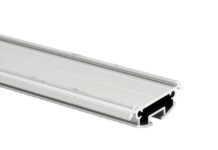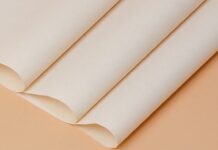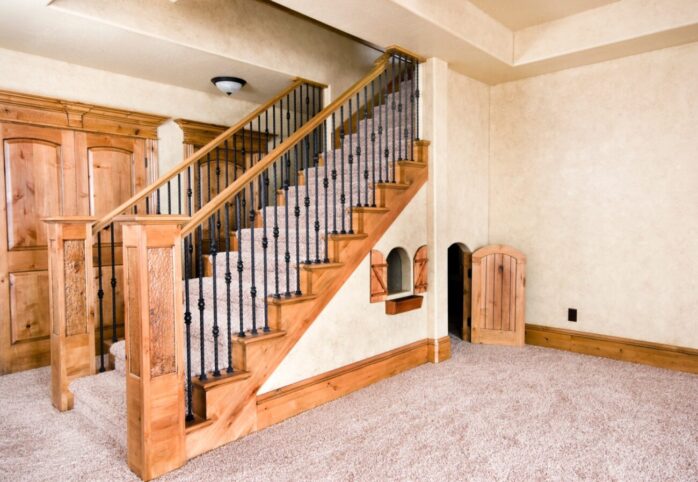
Railing and handrails are among the essential safety features of a staircase; these items prevent injuries and fall. A stair railing can be made using various materials like glass or wood to achieve various visual effects. Also, the type of handrail and stair railing significantly determines its last appearance.
A handrail is a part that you hold on to for support when moving on the stairs and should provide stability. This part can be made using different materials; you can attach it to a wall or put it on top of balusters.
On the other hand, a stair railing protects you from a fall when walking down the stairs. This item must be strong enough to avoid breakage if you fall on it, and it can also be made using various materials.
The best material for making a stair railing depends on the desired look and surrounding environment. Metals like iron and steel are ideal for industrial and commercial settings due to their strength and classic appearance. On the other hand, glass is used if there is an important view beyond the railing.
Below we discuss the complete stair railing guide.
1. Steel
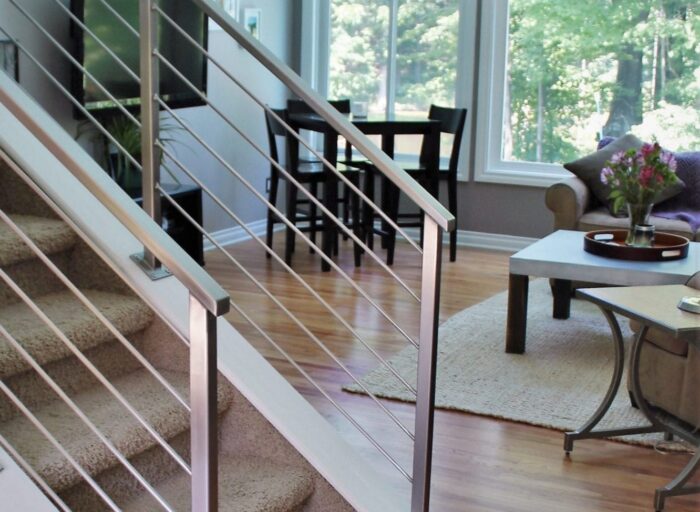
Steel is a common material for making stair railings and handrails in industrial and commercial setups. Most companies utilize galvanized steel to prevent rusting, but it also requires frequent maintenance to prolong its lifespan.
The galvanized steel is coated using zinc to ensure the corrosive material does not destroy the steel. Also, stainless steel is incorporated with nickel and chromium to enable it to resist corrosion. Steel rails can be used in almost all environments, but the power-coated design is more appropriate for industrial applications.
Stainless steel rails give your home a more modern and functional look. The pros and cons of stainless-steel railing include the following;
Pros
- It is strong and popular for its long lifespan. This, in turn, makes it the best material for railing.
- Homeowners can coat steel using liquid paints and powder coatings to enhance their performance.
- Steel is weather resistant and versatile, meaning you can use it inside or out.
- Galvanized steel requires minimal maintenance and can be cleaned using a detergent and sponge.
Cons
- Stainless steel can weaken and buckle in high heat
- Stainless railings are more expensive than materials like wood
- Steel might be a complicated material to use because it needs special equipment and is heavy.
2. Aluminum
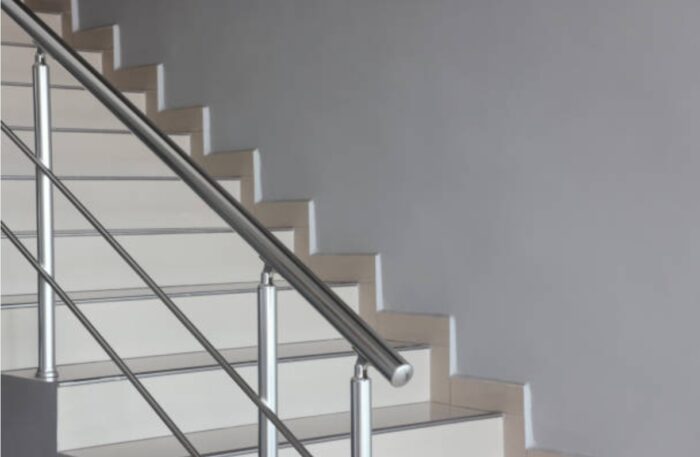
Aluminum is a low-density element that is much lighter than steel. This element resembles silver but is highly reflective. The main highlight of aluminium is that it resists corrosion and rust without extra treatment.
Aluminium stair railings are common in decks and entrance steps, but you can use them in any facility or building. The pros and cons of these railings include the following;
Pros
- It is highly durable and creates safe environments
- This element can be powder coated to provide a collection of colours
- Aluminium is easy to cut, thanks to its lightweight
- It is easy to install
- It withstands adverse weather conditions.
Cons
- The most significant disadvantage of aluminium railing is they are more expensive compared to steel.
- They also scratch and dent faster than steel.
3. Wood
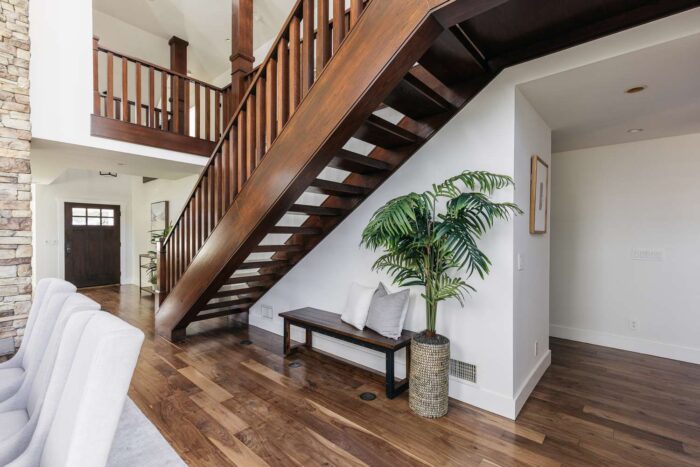
Wood is the most classic and traditional material for making railings and handrails. The most common woods include red oak, which you can easily sand and stain. Ash, mahogany, and cherry are other common woods used in making railings.
Wooden stair railings are commonly found in traditional buildings and residences, mainly at the entrance. They are mainly used indoors but can be erected on other exterior surfaces. The main pros and cons of wooden railings include the following;
Pros
- The main benefit of using wooden stair railings is they have a natural beauty, thus making your premises more attractive.
- Wood can also be customized to achieve various appearances and stained in different ways to match your interior décor.
- They are easy to clean and maintain.
Cons
- Most people consider wooden railing as outdated unless when blended with modern materials.
4. Wrought Iron
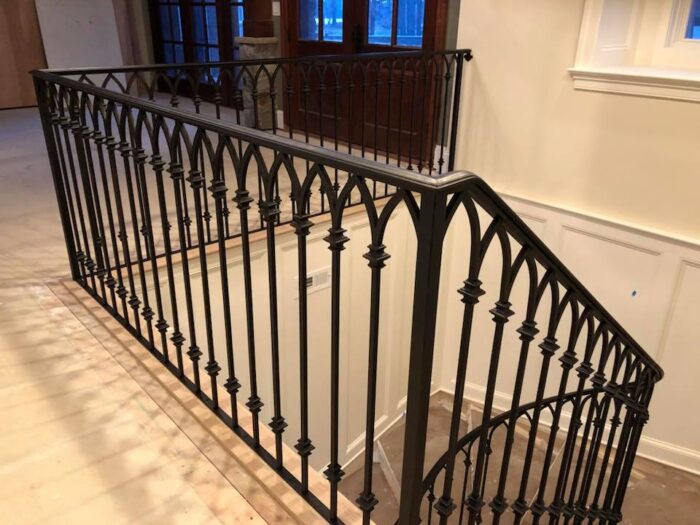
Wrought iron railings can be used for both indoor and outdoor staircases. This iron has a low carbon content and has a very high demand. This element is no longer produced on a mass scale today, and most items disguised as wrought iron have a low carbon content.
Decorative iron railings are found in office buildings and private residences. These elements are blended with wooden handrails for a more dramatic and effective appearance. The main pros and cons of this element include the following;
Pros
- The leading benefit of wrought iron is its high versatility. This element is highly malleable, meaning you can use it to achieve different looks.
- Wrought iron has a high strength that provides strength and stability to a staircase.
Cons
- Wrought iron is generally more expensive than other materials because it is mainly custom-made.
- It requires additional coating to protect it from dust
- This element can rust significantly if not maintained properly.
5. Glass
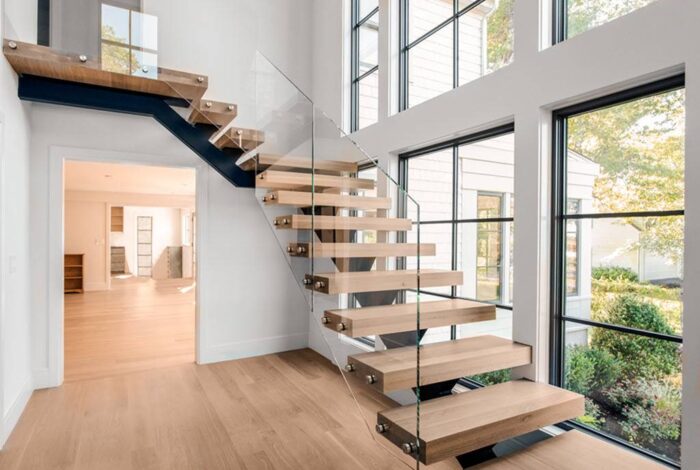
Glass railings are not the safest options, but are ideal for use in staircase railings. Glass railings are available in different designs like frosted, tinted, and semi-transparent designs. Glass railings can be used both for interior or exterior railings and are mainly found in commercial homes and buildings.
The main pros and cons of glass railings include the following;
Pros
- They have a safe barrier that does not distract any views
- They are easy to clean
- They can be used as wind barriers when put outdoors
- They make rooms look bigger, as they allow natural light.
Cons
- These railings are easy to clean, but you must do it frequently to avoid fingerprint accumulation.
- They can become cloudy when used outdoors for a long period
- Animals and birds can bump into them due to their transparent nature.
Final Thoughts
Staircase railings are important, as they prevent unwanted accidents or injuries. These railings are available in different types, and you should decide based on your environment. The above article has discussed everything you need to know about these railings; more information is available online.

